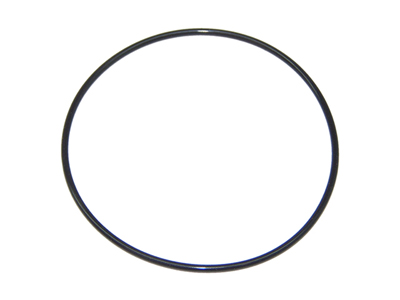Save the seals! 5 ways to protect hydraulic seals during installation

Hydraulic seals play a fundamental role in the operation of construction equipment such as small earth-movers, mobile elevating work platforms and telehandlers. They prevent leakage and contamination in the hydraulic systems of machines, which could cause malfunctions. That is why it is advisable to also replace its seals when repairing or replacing a hydraulic component. But be wary during the installation, because seals tend to be fragile parts when installed incorrectly. Follow our five best practices, and it (almost) can’t go wrong.
Types of hydraulic seals
Seals are made of soft materials such as acrylonitrile and different types of polymer. They are either captured in the grooves of hydraulic components or are fixed in place by rings, forming a seal assembly. Hydraulic seals come in all shapes and sizes, with each type serving a unique purpose. You can shop the following types at TVH:

O-ring
An O-ring is a static, round sealing ring with a circular cross-section. This type of seal is fabricated through vulcanisation from moulding tools as a complete ring.

Back-up ring
This type of seal is always used in combination with an O-ring. As its name implies, a back-up ring serves as a backup to prevent extrusion due to excessive pressure on the O-ring.

V-ring
A V-ring is used on rotating parts and is self-retaining on the shaft. The seal is flexible and applies a low-contact pressure against the counter surface, which is sufficient to maintain the sealing function.

Oil seal
This type of rotary seal is used on engines and other applications. An oil seal is able to withstand high temperatures, pressures, and rapid movements. Its purpose is to keep hydraulic oil inside. Depending on the type, it can also be used to keep contaminants out.

Piston seal
A piston seal maintains the sealing contact between a piston and a cylinder bore. It ensures that the hydraulic fluid is contained on the correct side, while also allowing the movement of the piston rod.

Lip seal
This type of seal is similar to a piston seal. The main difference is that this type of seal only works in one direction, whereas the piston seal works in two directions.

Guide ring
A guide ring does not have a sealing function but is rather used to guide a moving part over a static part. In that way, it makes sure everything stays in alignment to prevent leaks.

Wiper ring
This seal is used to keep contaminants such as dust and dirt out of hydraulic cylinders.

Composite seal
A composite seal consists of multiple parts and can function differently depending on the shape and application. It can have the same properties as a piston seal or lip seal.

Bonded seal
Used solely to seal screws and bolts on the assembly. This type of seal consists of a metal and rubber part that is put on the shaft and/or thread and which seals against the head of the screw or bolt.
5 best practices for flawless seal installation
A faulty installation of hydraulic seals can lead to the failure of hydraulic systems. Follow these five tips before and during the installation to get the most out of hydraulic seals:

1. Inspect the seals
Subject the hydraulic seals to a thorough inspection before installation. Don’t install seals that show signs of damage, such as scratches or cuts, because that could lead to leakages.

2. Keep all the parts clean
Another precaution to take before installation is to make sure that all parts are clean and intact. This means the hydraulic component should be free of blemishes such as burrs, welding splatter, etc. If such imperfections are spotted, they can of course be repaired. But this should always be done in an area that is free of dust and moisture.

3. Protect the seals
As mentioned before, seals can be fragile parts. Therefore, it is crucial to protect the seals as much as possible. During installation, they shouldn’t come in contact with sharp edges, drilled holes or threads. So always use the correct installation tools, sleeves or mounting tubes. In addition, care should be taken to ensure that the seals are not left in a deformed position for too long.

4. Lubricate the seals
Before the assembly, lubricate the seal and its sealing path to enhance durability and prevent abrasion. But take care! All seals must be lubricated with fluid that is compatible with the fluid used in the hydraulic system.

5. Check the orientation
A final tip before installation is to ensure that they are correctly orientated with respect to the fluid direction. It might not be clear to see at first glance, but it is possible to install a seal upside down, which can lead to early failure of the seal.
In need of hydraulic seals?
Since the seals of hydraulic components are such vital parts of machines, TVH makes sure to only deliver the best products. Using great care, we select the right seal kit for a certain application, ensuring the longevity and proper functioning of parts. Go to our online shop to browse all our hydraulic seals.
Could you use some help finding the correct seal (kit) for a hydraulic component? Then don’t hesitate to contact us, our experts are more than happy to help.
About the authors
This blog post is brought to you by your construction equipment marketing team.